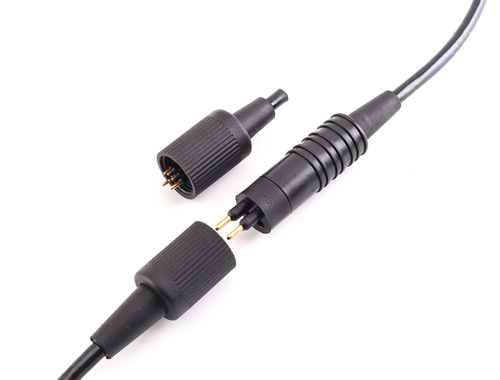Exploring the Depths: The Critical Role of Underwater Connectors and Cables in Marine Technology
Views: 3535
Author: Site Editor
Publish Time: 2024-02-05
Origin: Site
Underwater connectors and cables play a critical role in a wide range of applications, from deep-sea exploration and scientific research to offshore oil and gas operations, and even in the telecommunications industry with undersea internet cables. These specialized components are designed to ensure reliable electrical and optical connections in the challenging and corrosive conditions of the underwater environment.

The Importance of Underwater Connectors and Cables
Underwater operations depend heavily on the transmission of power and data between surface vessels, underwater equipment, and installations on the seabed. Given the harsh conditions found in marine environments, including high pressure, saltwater corrosion, and the potential for biofouling, underwater connectors and cables must be robustly engineered to maintain integrity and functionality over extended periods.
Design and Material Considerations
The design of underwater connectors and cables involves careful consideration of several factors:
· Pressure Resistance: Deep-sea applications require connectors and cables that can withstand extreme pressures. This is often achieved through the use of high-strength materials and designs that can equalize internal and external pressures.
· Corrosion Resistance: Saltwater is highly corrosive, necessitating the use of corrosion-resistant materials like stainless steel, titanium, or specialized plastics and rubbers.
· Flexibility and Durability: Cables must be flexible enough to handle installation and operational maneuvers while being durable enough to resist wear, abrasion, and environmental degradation.
· Sealing Technologies: To prevent water ingress, underwater connectors use advanced sealing technologies, such as O-rings and gaskets, which must remain effective under pressure and over time.
Types of Underwater Connectors and Cables
Underwater connectors and cables come in various types, each suited to specific applications:
· Electrical Connectors and Cables: Used for power supply and electrical signal transmission. They are designed to carry electrical currents at various voltages and currents.
· Fiber Optic Connectors and Cables: Used for high-speed data transmission. These offer significant advantages in terms of data capacity and speed over long distances without electrical interference.
· Hybrid Connectors: Combine electrical and optical connections in a single unit, allowing for both power and data transmission through a single connector.
Applications
The applications for underwater connectors and cables are diverse:
· Oceanographic Research: Instruments and sensors for studying marine environments rely on these components for power and data transmission.
· Offshore Energy: In the oil, gas, and emerging offshore renewable energy sectors, underwater connectors and cables are essential for operational infrastructure, such as control systems and power distribution networks.
· Undersea Telecommunications: The global internet relies heavily on a network of undersea fiber optic cables, requiring robust connectors for sections and repairs.
· Defense and Security: Underwater connectors and cables are used in naval and security applications, including submarine communications, mine detection, and remotely operated vehicles (ROVs).
Challenges and Future Directions
Despite advances in technology, the design and deployment of underwater connectors and cables face ongoing challenges, such as improving reliability, enhancing performance, and reducing costs. The future will likely see further innovations in materials science, connector design, and signal transmission technologies, aimed at addressing these challenges and expanding the capabilities of underwater systems.
In conclusion, underwater connectors and cables are indispensable to the exploration, utilization, and understanding of marine environments. Their development reflects a fascinating intersection of engineering, materials science, and marine technology, with significant implications for a wide range of scientific, industrial, and telecommunications applications. As we push the boundaries of underwater exploration and exploitation, the evolution of these critical components will continue to be a key area of focus.

 EN
EN DE
DE JP
JP ES
ES SE
SE FR
FR IT
IT CN
CN 한국어
한국어 ภาษาไทย
ภาษาไทย بالعربية
بالعربية Nederlands
Nederlands Türkçe
Türkçe Język polski
Język polski Tiếng Việt
Tiếng Việt Zulu
Zulu Bahasa Malay
Bahasa Malay